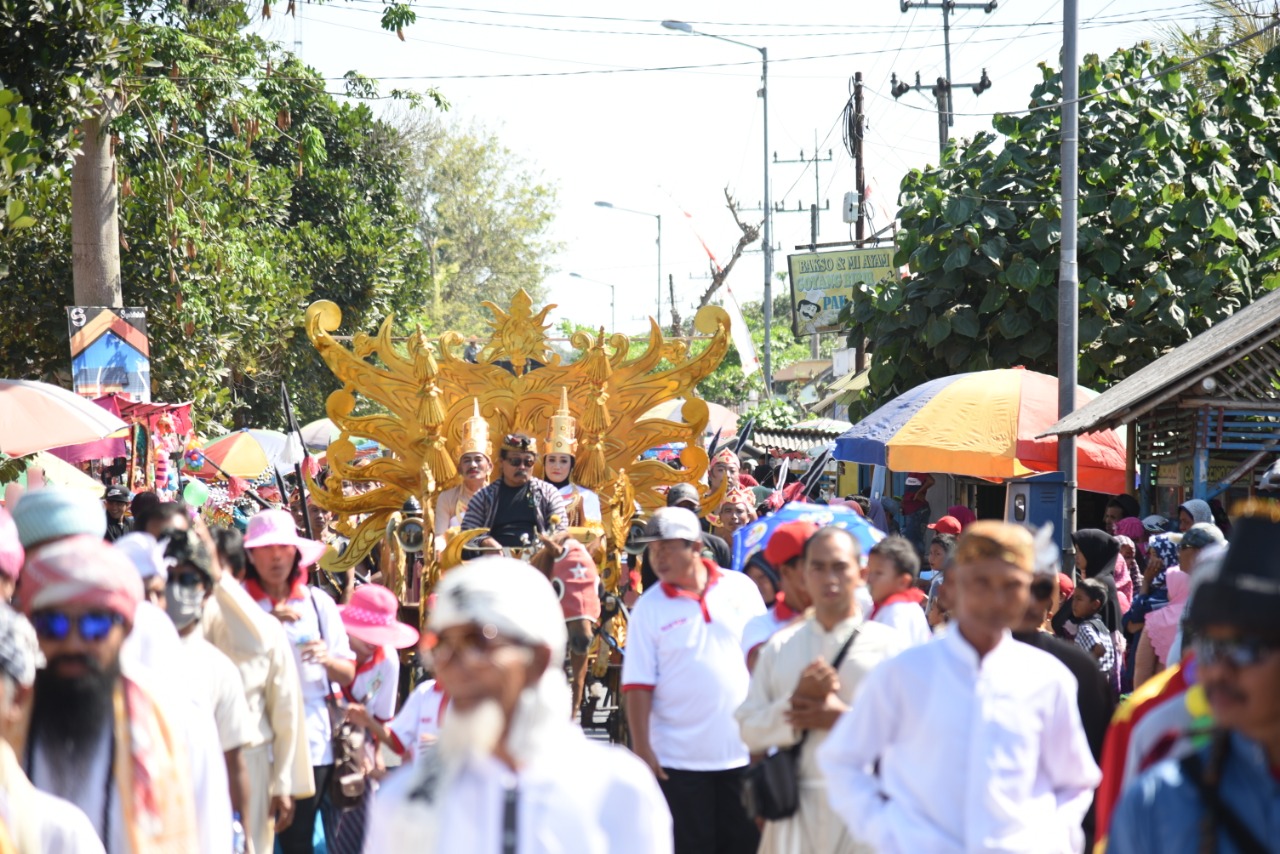This land, Indonesia, was born with a wealth of racial, cultural, ethnic, religious, and linguistic diversity. Among these, Sukoreno stands as a miniature representation of Indonesia itself. Situated to the south of Jember Regency in East Java, this village boasts a unique history.
Originally named Gumuk Lengar, derived from a hill called Padas frequently visited by people digging for stones, the village underwent a transformation when an artifact was discovered beneath a Suko or Suko flower tree, known for its four-colored blossoms. Following this discovery, the village was renamed Sukoreno, signifying diverse pleasures.

The hallmark of this village lies in its diversity of religions, beliefs, and cultures. According to the Central Bureau of Statistics (BPS) in Jember Regency, as of 2020, the religious demographics comprised 7,152 Muslims, 35 Protestant Christians, 110 Catholics, 124 Hindus, 70 followers of the Sapta Darma belief system, and 25 adherents of the True Knowledge Belief system.
Remarkably, the coexistence of diverse faiths does not diminish the solidarity and spirit of tolerance among them. Evidence of this lies in the seamless coexistence of places of worship. Mosques, churches, and temples stand within approximately two hundred meters of each other.
What makes this village even more captivating is the communal effort invested in constructing these places of worship. For instance, during the construction of a Sapta Darma house of worship, many Muslim residents actively participated, even contributing to the establishment of the Candi Busana sanctuary (the local term for the Sapta Darma place of worship).
Similarly, during funerals of Sapta Darma followers, Muslim community members pay their respects to the deceased and accompany them to the cemetery. At times, local residents, particularly Muslims, guided by Muslim religious leaders, are invited to lead prayers for the departed followers of Sapta Darma.
This interfaith solidarity fosters a sense of comfort and tranquility among the villagers, painting a beautiful and commonplace potrait in Sukoreno.
Syamsul Bahri, a prominent figure in the Interfaith Communication Forum (FKUB) representing Islam, underscores the necessity of tolerance in respecting one another and valuing existing differences. This is exemplified by the coexistence of mosques and sanctuaries without eroding the bond of brotherhood among them.
The community in this village consistently upholds an open-minded approach toward their differences, ensuring that they do not disrupt each other’s religious practices. “The best path to religious tolerance is clearly stated in Surah Al-Kafirun, verse 6: ‘For you is your religion, and for me is my religion,'” he remarks.
He emphasizes that humanity, by its nature, embraces diversity as part of the divine plan. Hence, tolerance stands as a fundamental aspect in cultivating a harmonious and prosperous society, both mentally and spiritually.
Through tolerance, equal opportunities are extended to all groups, even minorities, such as the Sapta Darma followers in Sukoreno, enabling them to exercise their rights.
However, tolerance demands principles of justice, equality, and empathy toward others. Yet, instances of intolerance persist, especially toward certain groups like the followers of Sapta Darma. Intolerant attitudes breed discrimination and stigma, such as labeling them as ‘misguided’ by some other groups or lacking educational facilities supportive of the children of these followers, resulting in their ‘othering.’
Stigmatization of the Sapta Darma adherents may stem from various factors, including state policies that marginalize them within religious spheres. Additionally, distinctions between religion and belief also contribute to the emergence of discrimination and stigma.
These prejudices and forms of discrimination undeniably impact their psychological well-being. Nevertheless, certain segments of society, especially among the Muslim community, have been able to mitigate discrimination and stigma faced by Sapta Darma adherents. This is evidenced by Muslim residents aiding in the construction of the sanctuary and the presence of Muslim community leaders in events organized by the adherents, such as communal activities and significant rituals.
At times, community leaders from the Muslim community facilitate dialogues between different faiths and belief systems, aiming for an exchange of ideas to progress the village. These platforms for dialogue, involving members from various religious backgrounds and belief systems, serve as an outlet to quell identity conflicts.”









